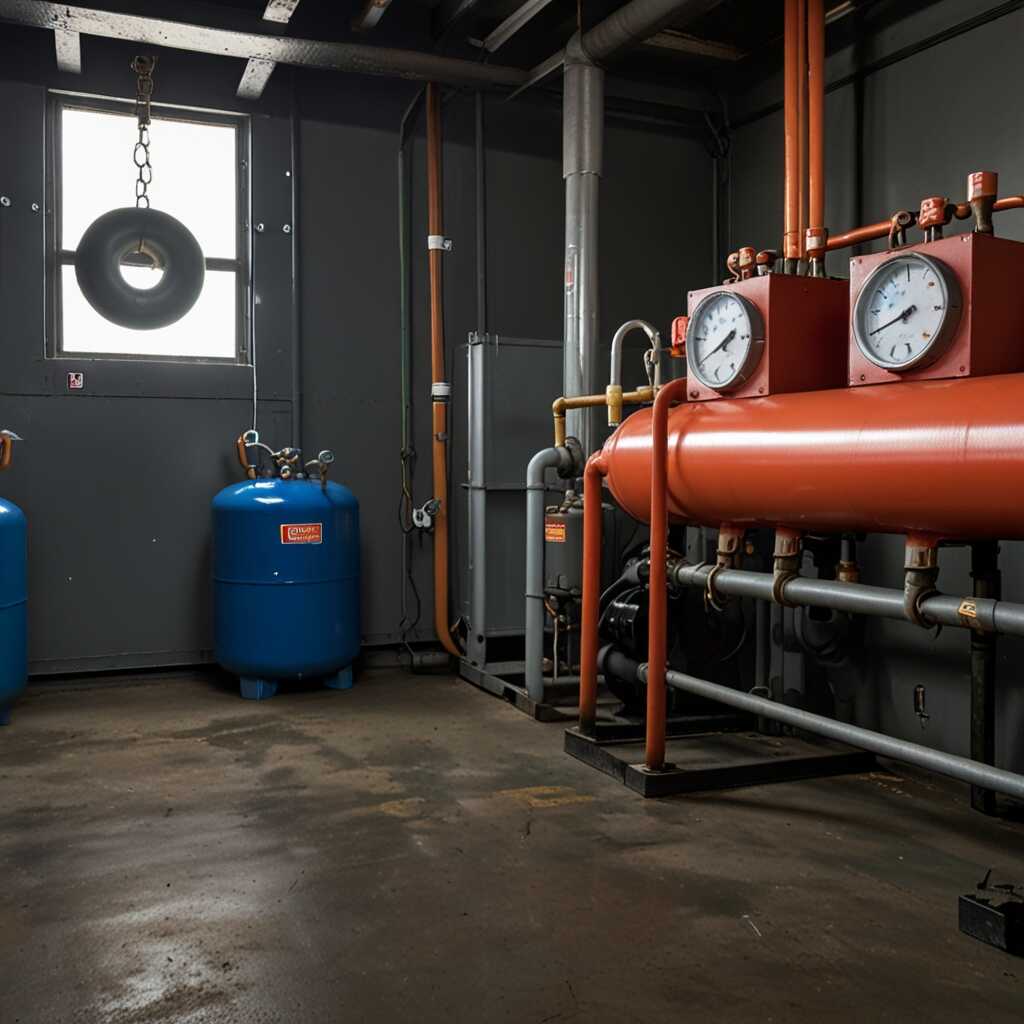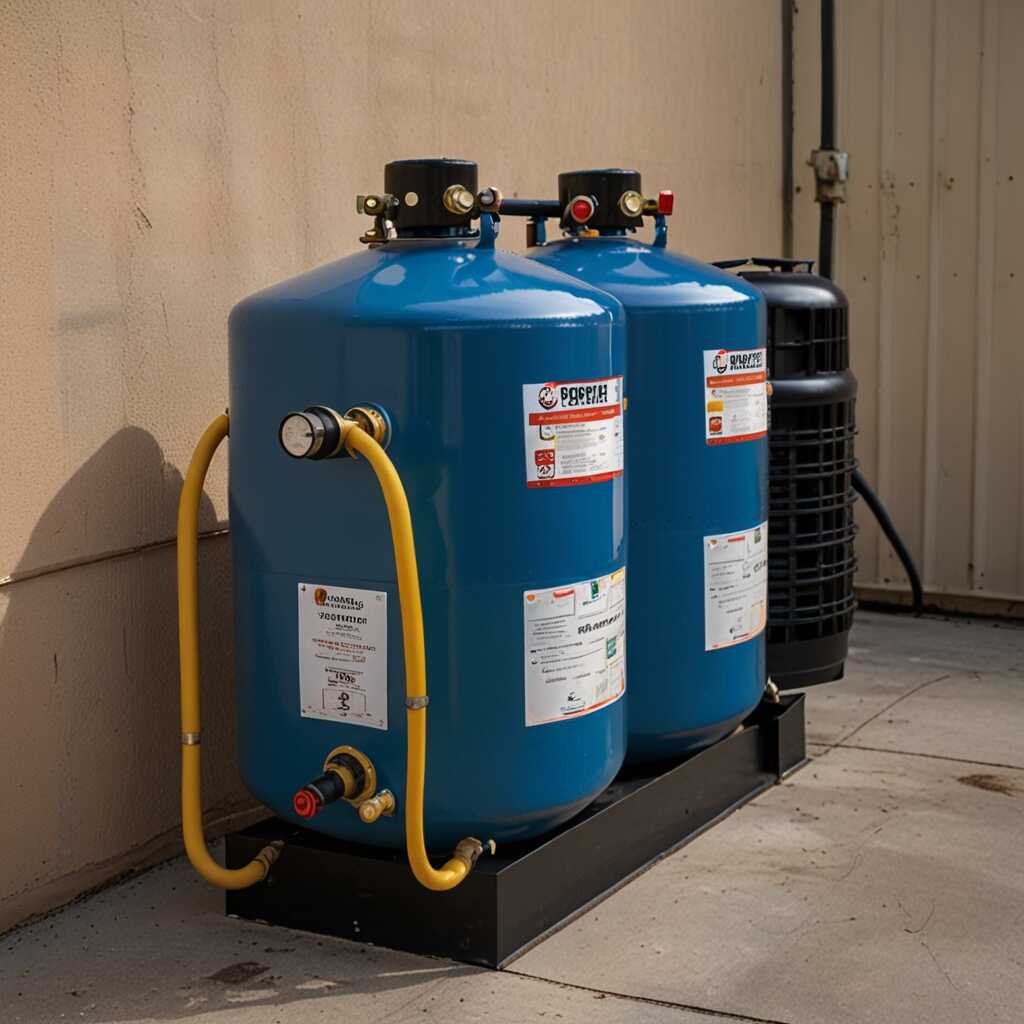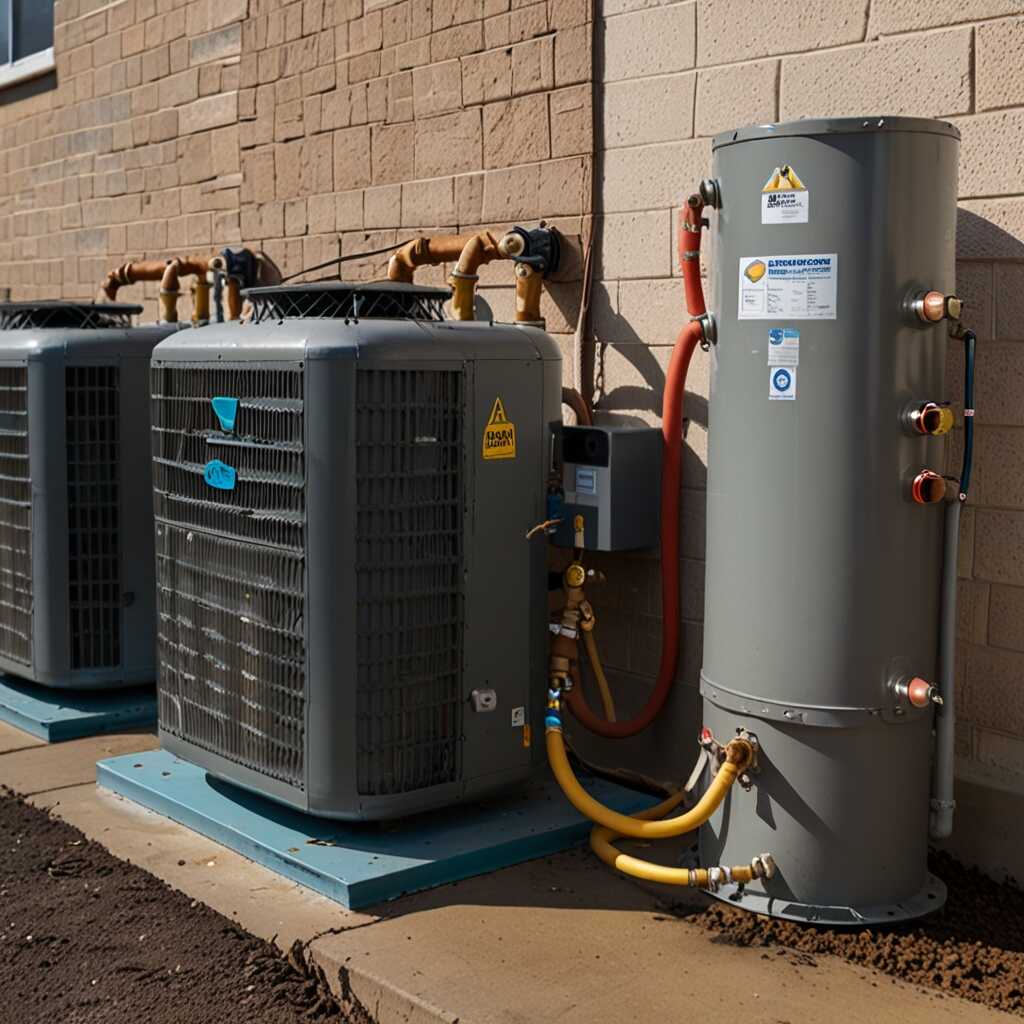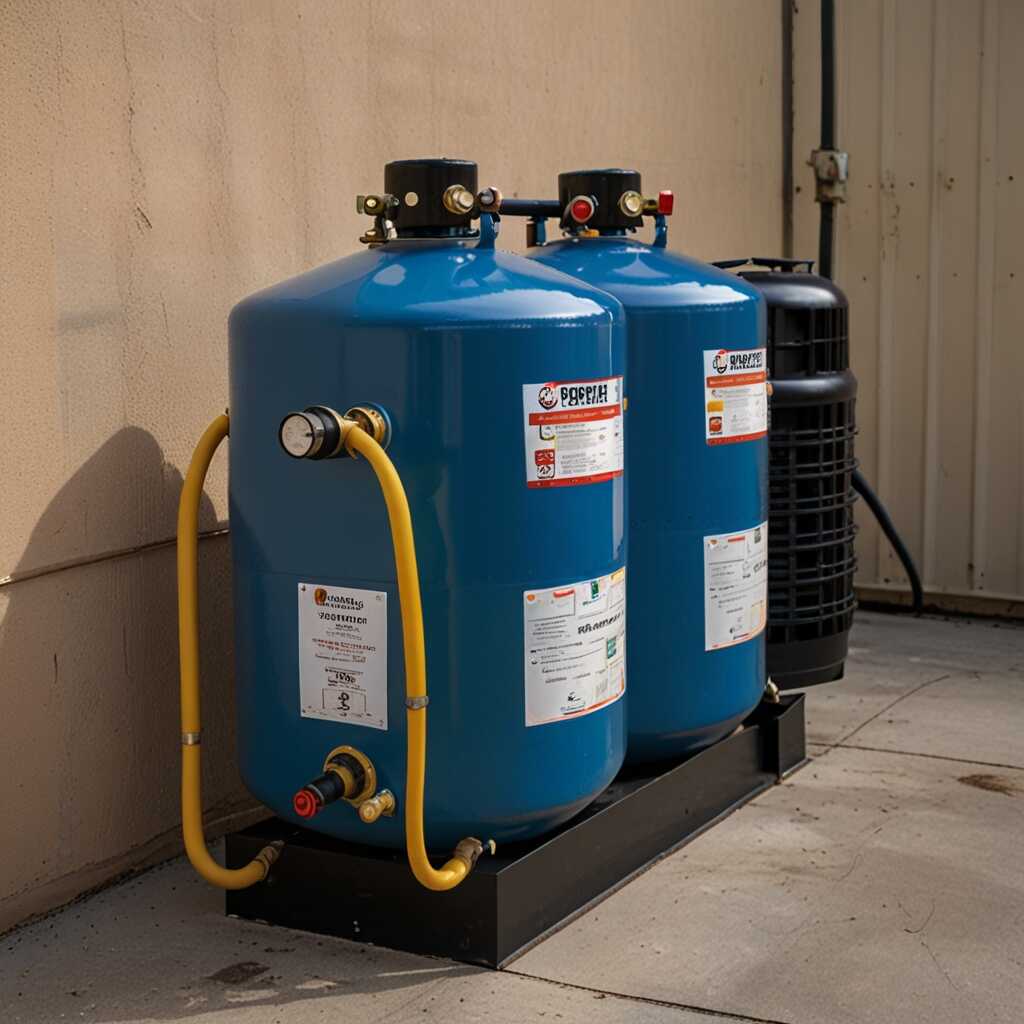Graduated cylinder markings play a crucial role in enhancing precision in refrigerant recovery machines. These markings allow technicians to measure refrigerant quantities accurately, which is vital for effective recovery processes. At Refrigerant Recovery Pro, we understand that precise measurements help HVAC professionals ensure compliance with environmental regulations while optimizing performance. This article will explore how these markings contribute to efficiency and accuracy in refrigerant recovery.
Introduction to Refrigerant Recovery Machines and Their Importance
Refrigerant recovery machines are essential tools in HVAC systems. They are designed to collect refrigerants from cooling systems during repair or maintenance. Precision in refrigerant recovery processes is primarily determined by several factors, such as the reliability of the equipment, the quality of measurement markings on cylinders, and the technician’s experience. Common types of refrigerant recovery machines include refrigerant recycling machines, recovery-only machines, and those designed for both recovery and recycling. Each type ensures different levels of efficiency and precision in handling refrigerants.
Understanding Refrigerant Recovery Process Components
The refrigerant recovery process involves several key components including the recovery machine, recovery tanks, and hoses. Each part plays a vital role in ensuring effective refrigerant collection. Recovery machines equipped with precise measurement markings allow technicians to monitor the volume of refrigerant being recovered accurately. This precision enhances the overall efficiency of the process, reducing the potential for waste and environmental impact. Technicians must be aware of the capacity limits for each machine and the specifications for refrigerant types to ensure optimal performance and compliance with environmental regulations.
Why Measurement Accuracy is Crucial in Refrigerant Recovery
Measurement accuracy is essential in refrigerant recovery because it directly impacts the system’s efficiency and environmental safety. Accurate measurements ensure that recovered refrigerants are within regulatory thresholds, thereby protecting both the technician and the environment. Inaccurate refrigerant recovery can lead to equipment malfunction, resulting in increased energy consumption and potential leaks of harmful substances into the atmosphere. This could also subject technicians to regulatory penalties. Typically, a standard recovery machine can handle up to 25 pounds of refrigerant effectively, but this can vary based on the machine’s specifications.
Impact of Inaccurate Measurements on Recovery Systems
Inaccurate measurements in refrigerant recovery can significantly lower system efficiency and operational performance. Issues such as overcharging or undercharging a system can lead to reduced cooling capacity or compressor damage. Over time, this inefficiency escalates energy usage and results in higher operational costs. Moreover, non-compliance with environmental regulations can lead to severe fines. Employing equipment designed for precise measurements, equipped with clear graduated cylinder markings, enhances the ability to recover the appropriate amount of refrigerant and ensure reliable operations. This accurate testing enables HVAC professionals to maintain and service systems more efficiently, extending equipment life and promoting eco-friendly practices.

Understanding Graduated Cylinder Markings in Recovery Machines
Graduated cylinder markings are essential in refrigerant recovery machines. They provide critical information for precise refrigerant measurement during recovery tasks. These markings are designed with calibration to ensure accuracy regardless of refrigerant type. The design can include a variety of scales for different measurements, enhancing reliability. For example, markings may indicate both volume and weight, allowing users to manage various refrigerants effectively. Reliable readings help technicians adhere to proper recovery procedures, thus improving environmental compliance and efficiency.
Calibration Design Features of Graduated Cylinders
The calibration design features of graduated cylinders are pivotal for accuracy in refrigerant measurements. Each marking is tested to provide reliable data, which allows HVAC professionals to evaluate the exact amount of refrigerant recovered. Typically, graduated cylinders cover a measurement range between 0 to 30 gallons. This extensive range ensures users can handle large volumes of refrigerants without losing precision. The careful design also considers changes in temperature and pressure, which can affect measurements. By understanding these calibration design features, technicians can perform their tasks more efficiently and confidently, knowing that they can rely on the markings for accurate results.
Quantitative Data on Measurement Accuracy in Recovery Tools
- Graduated cylinders have markings that indicate volume in milliliters or liters.
- Many accurate cylinders allow measurements to 0.5 ml or 1 ml increments.
- Some cylinders can measure up to 5 liters of refrigerant at a time.
- High-quality cylinders maintain accuracy to within ±0.5% of the total volume.
- Graduated cylinders increase precision by offering clear visual cues for the user.
- Measurement clarity can directly affect recovery rates by up to 15%.
- Technicians may reduce waste by accurately measuring required refrigerant quantities.

Effective Techniques for Using Graduated Cylinders During Recovery
Techniques for using graduated cylinders effectively improve measurement reliability during refrigerant recovery. Properly calibrating each graduated cylinder is essential for accurate results. For instance, using multiple graduated cylinders can enhance the testing capability. Each cylinder can handle different refrigerants, ensuring precision in measurements. Implementing procedures like reading the meniscus at eye level prevents parallax errors. This method ensures technicians measure the refrigerant level accurately. Utilizing these techniques helps technicians minimize errors and optimize recovery efficiency.
Essential Calibration Procedures for Graduated Cylinders
Calibrating graduated cylinders is essential for achieving measurement accuracy. Begin with a clean and dry cylinder, ensuring no residue interferes with results. Next, fill the cylinder with a known volume of water, allowing it to settle. Record the level and compare it with the expected measurement. This testing provides data on the cylinder’s performance and reliability. Repeat this process for various refrigerants to account for differences in density. Adopting these calibration procedures enhances the overall quality of refrigerant recovery operations.

Common Challenges in Interpreting Graduated Cylinder Measurements
Technicians often encounter misunderstandings when reading graduated cylinder markings. Some common challenges include misreading the meniscus, not accounting for parallax errors, and confusion between measurement units. Misreading the meniscus happens when technicians look at the wrong angle, leading to inaccuracies. Parallax errors occur when the measurement scale is not viewed straight on. Additionally, inaccuracies arise from the use of mismatched units, which can lead to inefficient refrigerant recovery. Addressing these challenges enhances the reliability of measurements and improves overall measurement accuracy in refrigerant recovery processes.
Enhancing Accuracy and Efficiency with Proper Techniques
Employing proper techniques can significantly enhance the accuracy and efficiency of measurements using graduated cylinders. Technicians should always ensure that they are observing the meniscus at eye level to avoid parallax errors. Calibration of the graduated cylinder is essential to maintain reliability in readings. Using graduated cylinders made from durable materials can provide consistent results. Regularly reviewing operational procedures reinforces the importance of accuracy. By focusing on these techniques, HVAC professionals can ensure that their measurements lead to effective refrigerant recovery, which contributes to environmental compliance and operational efficiency.
Key Advantages of Accurate Volume Indications in Refrigerant Systems
- Enhanced measurement accuracy leads to better refrigerant recovery processes.
- Graduated markings help reduce errors during refrigerant transfers in machines.
- Accurate volume readings minimize the risk of overfilling or underfilling.
- Technicians can better comply with environmental regulations using proper measures.
- Precision in measurements enhances operational efficiency and reduces downtime.
- Improved accuracy boosts confidence in technicians’ skill and methodology.
- Proper measurement practices contribute to the longevity of recovery equipment.

The Importance of Routine Calibration for Measurement Accuracy
Regular calibration of graduated cylinders is necessary for accuracy in refrigerant recovery machines. It ensures that measurements align with industry standards. Accurate readings are essential for safe refrigerant handling and compliance with environmental regulations. Best practices for calibrating include conducting tests regularly, using known reference points, and documenting all calibration results. Typically, graduated cylinders should be calibrated annually. However, high-use environments may require more frequent checks.
Understanding Calibration Techniques for Reliable Measurements
Calibration techniques for reliable measurements include using certified weights, environmental controls, and equipment verification. It is essential to perform calibration in conditions that mimic actual usage. For example, operate the graduated cylinders at typical refrigerant temperatures and pressures. This step ensures that the instruments provide accurate results. Regular training for technicians is also vital to maintaining the measurements’ reliability. HVAC professionals should follow guidelines set by Refrigerant Recovery Pro to maximize the effectiveness of their recovery processes.
Overview of Regulatory Standards for Refrigerant Recovery Processes
Regulatory guidelines for refrigerant recovery are crucial in maintaining environmental safety and efficiency. Key organizations like the Environmental Protection Agency (EPA) and the American Society of Heating, Refrigerating and Air-Conditioning Engineers (ASHRAE) create standards that HVAC professionals must follow. These include compliance protocols that mandate precise measurements during refrigerant recovery processes. Accurate measurement standards, especially when using graduated cylinders, help ensure that refrigerant quantities are correctly assessed, reducing the risk of leaks and environmental damage. Current regulations set a maximum allowable refrigerant leakage rate at 15%, emphasizing the need for careful monitoring and adherence to best practices in the industry.
Organizations Influencing Refrigerant Recovery Standards
Several organizations play a key role in shaping the regulatory framework for refrigerant recovery. The Environmental Protection Agency (EPA) is pivotal, issuing guidelines that directly affect compliance requirements. The Society of Automotive Engineers (SAE) also contributes, providing technical standards that improve the accuracy and safety of refrigerant management. Additionally, the Environmental Protection Agency collaborates with international bodies, ensuring that refrigerant recovery practices align with global environmental goals. These organizations help establish training programs that focus on the importance of using devices with proven features such as graduated cylinders for accurate measurement. This focus on precision not only aids in compliance but also enhances the overall efficiency of HVAC operations.
Brands and Use Cases for Refrigerant Measurement Tools
- Brand A offers transparent graduated cylinders with easy-to-read increments.
- Brand B features more durable cylinders but lacks clarity in markings.
- HVAC professionals seeking precision often prefer cylinders with color-coded markings.
- Refrigerant recovery technicians benefit from cylinders that can handle high-pressure fluids.
- Home-based HVAC educators often use handheld models for demonstrations and training.
- Environmental compliance officers rely on markings to ensure accurate disposal practices.
- Many technicians prefer specific brands based on their field experience and equipment familiarity.
Emerging Trends and Innovations in Refrigerant Recovery Technology
Recent innovations in refrigerant recovery technology focus on enhancing measurement accuracy. Smart sensors and digital displays are becoming standard in equipment. These features help technicians track the precise amount of refrigerant recovered. Advanced software integrates with recovery machines for real-time monitoring. Companies like RecoverX and EcoRecover are leading the market with these enhancements. As a result, these innovations help eliminate measurement errors, ensuring more accurate refrigerant management. By 2025, predictions suggest that 75% of recovery machines will include these advanced features, revolutionizing the industry.
Smart Technologies in Refrigerant Recovery Machines
Smart technologies in refrigerant recovery machines significantly improve measurement accuracy and efficiency. Integrated sensors measure refrigerant levels precisely. These machines can handle a variety of refrigerants, enhancing their utility across multiple applications. They also utilize Wi-Fi connectivity, allowing for quick updates and troubleshooting. This feature provides data analytics, helping companies track performance and refrigerant recovery statistics effectively. HVAC professionals gain from these advancements by achieving compliance and reducing environmental impacts.